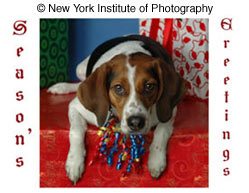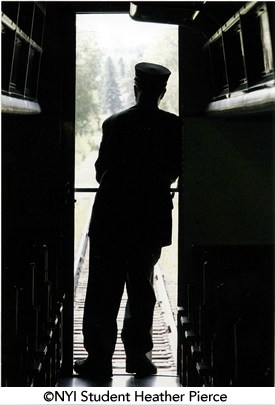The lens that comes packed with a single lens reflex camera is known as the "kit" lens. Professionals often buy their camera bodies and lenses separately, but almost all first-time buyers get their camera in a box that also contains the kit lens. Open the box, pop the lens on the camera, and you're ready to take photographs.
Years ago, the kit lens for film SLRs was a 50mm fixed focal length lens. Then it became a zoom lens, usually 28-80mm or thereabouts. With today's entry and advanced amateur digital SLRs, the kit lens is generally an 18-55mm zoom, or thereabouts.
It may even offer some kind of image stabilization feature.
A while back we featured an article called "My Second Lens for my first SLR," and while many people think about getting a second lens for their camera, NYIP Staff recently gave some thought to a question posed by an NYIP student: What if I had about $1,000 to spend on lenses and wanted to round out my gear for all kinds of situations? Their thoughtful answers provided the basis for the following article.
Most people who buy a Digital Single Lens Reflex (DSLR) camera purchase the lens bundled with the camera — the "kit lens" — and do just fine. After a little shooting, though, they realize there's a world of possibility out there for their photography if they add a few new lenses. That's what an SLR camera allows you to do — take that kit lens off and put other lenses on. At this point, however, sticker shock can set in: the best-rated lenses often come with a very big price tag.
So, are there some great bargains out there? Can you start adding to your camera bag without breaking the bank? Could we assemble a full camera bag of high-quality, useful lenses for under $1000? It turns out that we can.
The Bargain 50mm
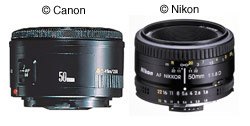
Let's start with the easy bargains. Most camera brands have a "plastic fantastic" 50mm available. For example, Canon sells a 50mm f/1.8 new for $100, and the Nikon 50mm f/1.8 is $125. These are classic lens designs, perfected over the years, and they have excellent optical qualities despite the bargain price. (These same brands usually also sell a 50mm f/1.4, generally around the $400 range. For most people, the less expensive 50mm will be just fine.)
50mm is a great focal length for basic portraits — it's slightly telephoto on most DSLR cameras so it's flattering to the human face, and it provides a working distance that is very comfortable for half-length portraits. In other words, with a 50mm on your DSLR, you end up standing at a distance from your subject that's really comfortable for most people — not too close, not too far.
Also, because a 50mm f/1.8 provides a very wide aperture, it's excellent for low-light work. And you can experiment with shallow depth of field: it becomes very easy to shoot at f/2.8 and get a person in focus and the background out of focus. A bargain 50mm is light, cheap and optically perfect — and that's tough to beat.
The Off-Brand Macro/Portrait Lens
Judging by the email we receive, many photographers are interested in portrait photography, and many are interested in exploring macro photography. What type of lenses are needed for portraiture or macro work? Well, we usually use focal lengths between 50mm and 135mm for portraits — it turns out that somewhat-telephoto focal lengths are usually flattering to the human face. Macro lenses tend to fall in that same range of focal lengths as well. (A macro lens is a lens designed to let us get a tiny subject at full size in our shot. In other words, even if we are photographing a tiny praying mantis or a button from a coat, we can get close enough and magnified enough that we can fill the frame with that object. This would include photography of everything from bugs to jewelry to architectural details.)
Well, all the major camera brands provide lenses just perfect for either task — for example, you can find a really classic portrait lens, like an 85mm f/1.4, designed and branded for Nikon, Canon, Sony, Pentax or Olympus. These are great lenses, but they're expensive. And you can typically find 50mm and 100mm macro lenses, also, but again the major brand versions tend to be pricey.
So, can find a lens that will work in our price range? Yes. It it turns out there are some "off-brand" macro lenses that perform very well as portrait lenses. They do incredibly well on optical tests, matching or beating the branded lenses, and they come in at good prices. There are two I would look at: the Tamron 90mm f/2.8 and the Sigma 70mm f/2.8.
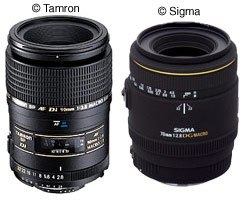
The Tamron 90mm f/2.8 is currently listing at many places at about $450. All the lens reviews and tests show this lens is a match optically for the best lenses out there — and at about 25% of the price of the "pro" branded lenses. One surprise with this lens: while most lenses don't test their best at the widest aperture — usually lenses perform much better stopped down at least one stop — it turns out that the Tamron does very well at its wide-open setting. So while it doesn't go to f/1.4, you can shoot at f/2.8 with it for very shallow depth of field.
I've shot with this lens to try it out, and I really like it.
The Sigma 70mm f/2.8 is another great possibility. A review in Popular Photography magazine a while back called it the sharpest lens in the Sigma lineup, and all the lens tests and reviews love it for both portraits and macro work. It's currently selling for $499. So with either of these, for about $500 bucks, you can start to experiment with beautiful head-and-shoulders portraiture, and then the next day you can grab your favorite insects and try some macro work. Sigma and Tamron make these for all major camera mounts, last I checked, and you can buy them at most of the big camera stores.
A Budget Wide Prime
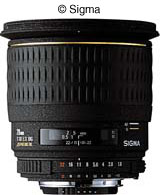
While we're on Sigma, another real bargain in their lineup is the 28mm f/1.8, currently selling for $349. I don't have this particular lens. I have both the Sigma 20mm and 24mm, so I feel I have that range covered. According to those who do own it, though, it's a high quality, wide and fast lens for a good price. It does have one downside: it's a big, heavy beast. There are much smaller and lighter 28mm lenses out there — but the Sigma is about a stop and a half faster, since its maximum aperture is f/1.8, and it has shown great performance in optical tests and reviews. On a DSLR, this 28mm range is very useful — it's fairly close to how your eyes see the world.
So, back to our camera bag — if we grabbed a plastic fantastic 50mm for $100, an off-brand-but-great Tamron 90mm for $450, and a Sigma 28mm for $349, that leaves us with $100. Can we get anything useful in that range?
The Lensbaby
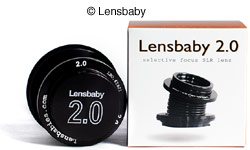
Well, besides adding lenses for specific tasks such as light low-light work, portraiture, macro or wide-angle photography, sometimes we want to create images that stand out from the crowd. So consider adding a Lensbaby to your kit. The new Lensbaby Composer is just outside our budget at $269, but "Muse" — available for most camera mounts — goes for about $99. This tool is intended to let you explore the possibilities offered by selective focus effects — purposely throwing areas of a scene out of focus. Besides creating distinctive, eye-catching images, this is a very fun item that might offer a chance to make an otherwise boring image into something unique. If you're interested in learning more about Lensbaby, check out Part One and Part Two of NYIP Student Advisor Ella Manor's series on Lensbaby.
Bargain Cautions
So, we've found enough bargains to fill a camera bag. If we decide to keep bargain hunting, are there any dangers to avoid? Well, I do advise people that when they see a lens that provides a superzoom range — for example, 20mm-300mm — for only $200 they should run the other way. There are a lot of lenses that will work and make photographs, but if you look closely you'll discover that cheap superzooms often have a lot of optical problems such as distortion (changing the shape of what is photographed), chromatic aberration (often seen as purple fringing) or vignetting (darkening in the corners of the frame). If our goal is to get high-quality images, a cheap superzoom won't work.
Also, if we take a look at the used market, there are risks to buying used lenses: a lens that is stored in bad conditions can have any of a number of problems, including degraded lubricants that cause the aperture to stick open longer than it should, or other damage that you won't see until you shoot with the lens. So I generally don't lean toward Ebay.com or Craigslist.com purchases, though some people will do very well there. I do think, however, that one can find very good bargains from reputable used stores — those that know lenses, and that will stand behind their product if something does turn out to be wrong.
Also, before buying any lens, use the Web to find specific reviews of how that lens works on your specific model of camera. You'll find that every lens has its positive and negative features, and that's definitely true on bargain lenses. So read the reviews and make sure the lens will work for you.


